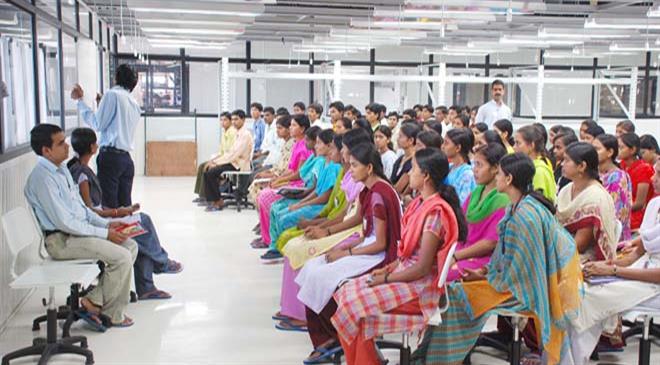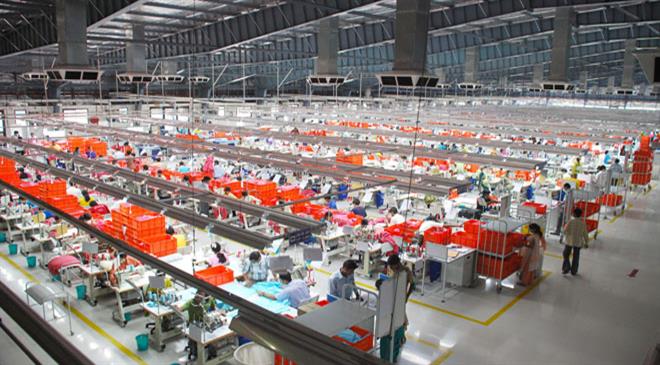Every product we design is sustainable by default
Pratibha Syntex, which produces over 60 million pieces of apparel annually including garments, innerwear, thermals, and sleepwear, recently won Woolworths' 'Supplier Excellence Award' for 'Supplier of the Year Sustainability 2019' and bagged the 2019 CO Leaders Award for setting trend in fashion early this year. Fibre2Fashion spoke to CEO Ashwani Palaha about the company's sustainable initiatives.
Pratibha has been organising the Fairtrade Premium Programme since 2014 and works closely with farmers for organic cotton production through the Vasudha initiative. Do Indian apparel manufacturers realise that such ethical practices are the need of the hour?
With growing awareness about sustainability including people and planet across the world, demand for ethically manufactured products are increasing day by day. The number of sustainable apparel items available worldwide surged from 58,144 SKUs in 2016 to around 353,817 SKUs in 2018 (up by 508 per cent), indicating retailers' and consumers' increased enthusiasm towards sustainable products. The recent Pulse 2019 report also states that consumer awareness has increased towards sustainable products. With the increasing demand of consumers, the Indian apparel industry is realising the need of ethical practices. Under the Fairtrade Premium Programme 2019, we have distributed refrigerators, washing machines and other home appliance to our associates. With the support of Patagonia MEC and Prana, we have been organising the programme since 2014. The aim is to uplift the life of the associates and farmers, who are the actual contributors to the industry.
Have sustainability, circular economy, and slow fashion had any impact from your major export markets? If yes, how?
We are vertically integrated and sustainability-oriented manufacturers of knitted garments. Within our business, we have created a sustainable ecosystem which deals with people, planet, process and prosperity. And, products are made by taking utmost care of all the four verticals. Every product we design is by default sustainable in nature. With sustainability being at the core of our business strategy, our business has gone from strength to strength.

What are the major concerns of buyers when it comes to sourcing apparel?
Mostly, a buyer focuses on raw material, product quality, price, compliances at factory level, and quick response from order to execution.
Tell us a little bit about your pilot tests of incorporating blockchain technology to improve traceability.
Sustainability is highlighted as a growing concern in the textiles sector and traceability has emerged as a feasible solution to this. We at Pratibha have realised this. We partnered with Infinichains, a blockchain company, to establish traceability through blockchain. Our pilot project has been successful. In this project, every garment has a tag with a QR code, which can be scanned through a credible app. With scanning the QR code, the entire journey of the garment form farmer to the end product is visible. One can donate directly to the farmer through a payment gateway or else the donation can be given for a cause like plantation, women's education, etc.

What have been the key findings and challenges?
In order to develop the tool, the major challenge was at the ginning level, where the hip lot is created with hundreds of farmers' cotton in the same place. The current process addresses it with an allocation basis. In the manufacturing phase, there is no challenge as such because our system is integrated, and all data is in SAP. We are now in the process of undergoing one more pilot where the journey will start from seed distribution to the end product.
What latest technologies and innovations are you investing in?
We have been investing in state-of-the-art technologies to upgrade our processes. Very recently, we had invested in SAP S/4 Hanna ERP and Optitex 3D for the design room. We are also in the process of developing a rooftop solar power plant to further reduce our carbon footprint.
Please share details of the last two fiscal years. What is the target set for 2020?
We have undertaken the following sustainability initiatives in last two fiscals to minimise the environment impact:
Water:
1. We have a ZLD plant with fully functional ETP and MEE. We have also STP for treating domestic sewage water. Currently, 100 per cent of our water is recycled and 96 per cent is coming back to the process. We don't use any raw water in the entire process.
2. We have CPB dyeing machine which consumes where the liquor ratio is 1:1.5.
3. We have installed a low liquor dyeing machine (Metsa 1:5) and replaced all old machines with high liquor machines.
Energy:
1. Replaced 10500 tube lights with LED lights-saving 389kwh/day.
2. Installed power quality monitoring system-saving 750kwh/day.
3. Installed high tech + high productive and low energy consumption MVS machines-saving 1210kwh/day.
Boiler fuel:
1. Replaced diesel with biomass briquettes saving 180000ltr diesel/year - 500MT less GHG emission.
The following are our sustainability goals for 2020, the baseline being 2016:
1. 50 per cent reduction in freshwater consumption;
2. 20 per cent reduction in energy consumption;
3. 30 per cent reduction in GHG emission;
4. Zero discharge of hazardous chemicals;
5. 100 per cent use of sustainable material;
6. 40 per cent reduction in hazardous waste.
Which are your major markets in India and abroad for organic cotton, fabrics and apparel? Where do you see the potential growing?
We focus on the quality of products. We aim for high quality, and hence we enjoy patronage of elite brands across the world. We export mostly to the US, Europe, Middle East and South Africa. Recently, we entered the domestic market with Reliance Retail. We are manufacturing knitted products.
What were your inputs for the report Empowering Consumers Through Transparency by the Sustainable Apparel Coalition (SAC)?
The report is like a bible for brands, retailers and manufacturers that are planning or implementing transparency in their processes. While the report compiles comprehensive understanding of what kind of transparency is most meaningful and useful to consumers, it highlights how it is being perceived and what impact the information will create in the minds of consumers.
With so much sensitivity about sustainability around the world, how are apparel manufacturers warming up to the idea in India? Do you see more manufacturers going the sustainable way?
Consumers are getting more concerned about sustainability. They want to know who made their clothes, who grew the cotton for their clothes, how their fabric is made, what impact the cloth has left on the planet. With growing awareness, retailers and manufacturers are evolving businesses towards sustainable practices. If I talk about our business, in association with C&A Foundation, we have played a pivotal role in developing Gold Certified C2C product range. Besides, we have developed a range of products, which consumes 50 per cent less water in manufacturing products. Besides, we have engaged water and energy efficient technologies in our processes. We are recycling 100 per cent of water and 97 per cent of this is being infused back into the processes.

Do you think the mainstream consumer is ready for fashion with a conscience in India?
India has population of 1.3 billion and 50 per cent of the population is aged 25 or below; so, we are a young nation. With increased usage of social media and technology, our youngsters do care about what they are buying. You can see the shift in consumer behaviour.




